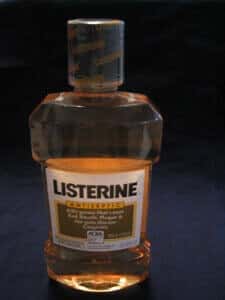
Have you ever suffered with painful cracks at the corners of the mouth that just wouldn’t go away? This condition has a lot of different names, which can be confusing. Some call it angular cheilitis. It is also called perlèche. Others use the term cheilosis or angular stomatitis.
What Causes Cracks at the Corners of the Mouth?
The causes of this problem can be just as numerous as the names, though of course there is no one-to-one link between name and cause. (That would be too easy.) Sometimes this irritation is a consequence of a vitamin B deficiency (Journal of the Canadian Dental Association, Sep. 2009). It may also be caused by a yeast overgrowth (Dermatologic Therapy, May-June 2010). That seems to be what was troubling this reader:
Q. I had angular cheilitis off and on for five months. The dermatologist scraped it and said it was just due to saliva. The steroid cream he prescribed only cleared it up for a few days before it repeatedly returned.
Listerine Cleared Up Angular Cheilitis:
My dental hygienist thought it might be fungal, and she suggested an athlete’s foot cream. Given the proximity of the problem to my mouth, I opted for Listerine. It has worked well on my athlete’s foot and seems more appropriate for the face.
After four days of applying amber Listerine regularly, the condition was healed. I continued the treatment for another few days and also used Listerine as my bedtime mouthwash. Four weeks out, no new outbreaks.
A. Thanks for letting us know that Listerine cleared up angular cheilitis. These cracks at the corners of the mouth are also known as perlèche or angular stomatitis. This irritation can be stubborn and slow to heal. It troubles many people who will be glad to know about your treatment.
We suspect that the antifungal activity of the herbal oils in Listerine (eucalyptol, menthol, methyl salicylate and thymol) is responsible for your success. Listerine has also been used by many readers to discourage the Malasezzia yeast that can cause dandruff or seborrheic dermatitis, or the Trichophyton fungus at the root of athlete’s foot.
Obviously, if the underlying cause of the yeast overgrowth is a vitamin deficiency or an underactive immune system, it will make sense to address those problems once the sores have disappeared. We have written about other home remedies for angular cheilitis here.

